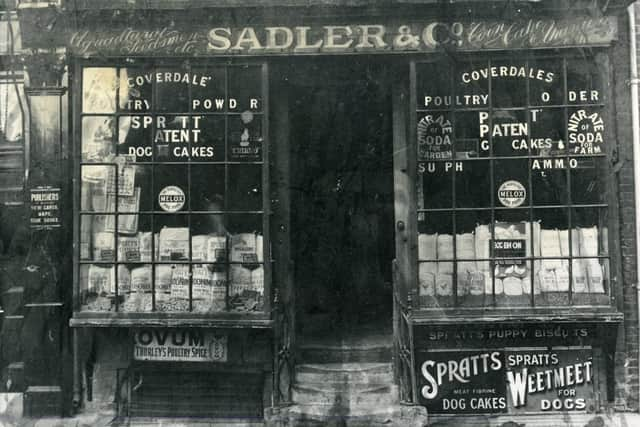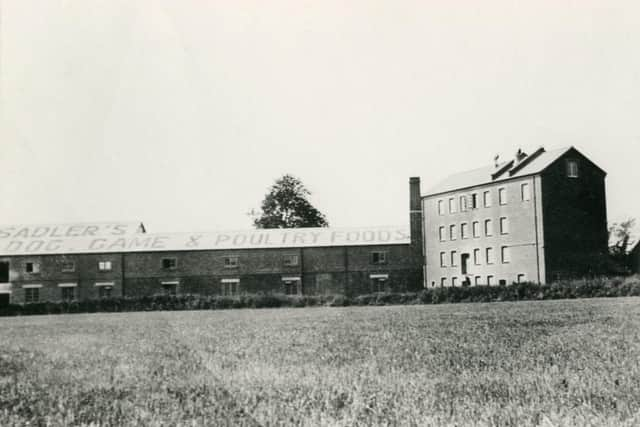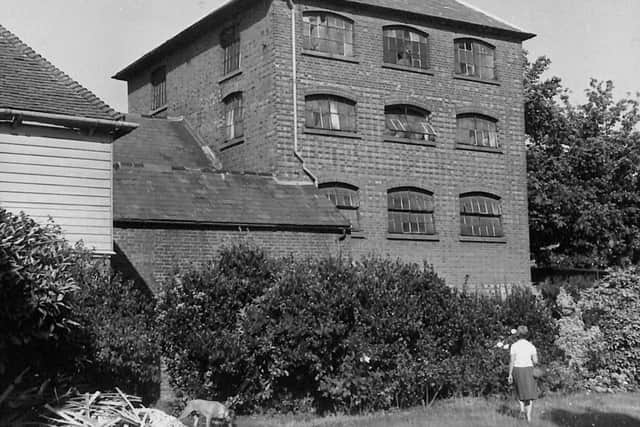The story of Sadler & Co in Chichester and how the company grew to take over Dell Quay
and live on Freeview channel 276
The son of Robert Sadler, a horse dealer and farmer, Fred started work for his uncle as an apprentice at a flour mill in Westhampnett at the age of 17, cycling there each day on a penny-farthing bicycle, receiving a wage of three shillings a week. In 1885, when he was just 20, his father bought Toogood’s, which, when purchased, had one employee along with a horse and a van.
By 1886, English farming had entered a period of depression. The 19th century had seen a lot of change, as arable farms fell vacant and were taken over by dairy farmers who relied on imported food stuffs, although Sussex seemed less affected. Few farmers in the Chichester area were forced into milk production and glasshouse crops.
Advertisement
Hide AdAdvertisement
Hide AdFred Sadler married Florence Byerley, the daughter of miller Frederik Bayerley, at Westbourne on November 27, 1890. In the 1890s, as Fred Sadler built up his business and reputation, he became a respected member of the business community, including attending the annual dinner at the Corporation of St Pancras.


As his business grew, he began importing cheaper animal feedstuffs. In May 1897, he signed an agreement with the Mayor, Alderman and Citizens of the City to lease the storehouse on the south side of the quay at Dell Quay at a rent of £5 10 shillings a year. It was the beginning of a long association between Sadler and Dell Quay which lasted for nearly 60 years.
Within two years, Sadler had run out of space but he persuaded the corporation to spend £325 on repairs and build an extension to the storehouse. In 1905, Fred Sadler’s original shop expanded to include 40 and 41 East Street, and several properties in Little London and East Row were purchased as the business grew. No. 30 Little London was the family residence, where he and his wife Florence lived with four children and a servant. This was next door to the seed store and offices.
The East Row property housed seed cleaning equipment, animal feedstuff, as well as corn and hay stores. In one of the yards here, Fred Sadler garaged his Rolls-Royce. By the 1920s, Sadler had control of the whole of Dell Quay, although the arrangement brought with it various obligations and responsibilities, as the harbour became an important leisure area for sailing and yachting.
Advertisement
Hide AdAdvertisement
Hide AdWest Sussex Records Office holds various correspondence between Sadler and the secretaries of the various sailing clubs, discussing rights of way and access to Dell Quay. As Sadler & Co expanded the business of dealing in seeds and agricultural supplies, the import of artificial fertilisers and coal came in through boat at Dell Quay, and the export of locally grown wheat and sugar beet was transported by a fleet of vehicles.


In 1928, a large store and mill were built in Terminus Road, where a range of dairy fattening foods were produced, taking over output from a Fishbourne grist mill where animal feeds were made and where the idea for making cattle cubes (compressed cubes of animal feed) had begun in 1924. By 1931, the mill was used for dog biscuit manufacture by Harrison & Garthwaites, who claimed to be the first baker of meat biscuits for dogs. In 1937, the mill was taken over by Sadler and the company sold various brands of dog food.
In the 1950s, Sadler bought the trading area in the Corn Exchange in East Street, where farmers had met for more than 100 years and continued to do so until 1966. By then, newer trading methods made the exchange uneconomic. The premises were sold to the book publishers John Wiley.
Fred Sadler died on March 6, 1961, at the age of 95, and was described as being one of the city’s well-loved characters. The seed store and offices in Little London were purchased by the architect Stanley Roth in 1962. He had the building converted to house the Chichester City Museum, later the Chichester District Museum, where it remained until 2012 before moving to its new premises on Tower Street and being renamed The Novium Museum.
Advertisement
Hide AdAdvertisement
Hide AdThe Little London seed store has now been converted to private housing. The store at 40 and 41 East Street remained operating as a garden centre. In 1977 and 1978, the store was gradually converted into what became Sadler’s Walk, a mall of small shops. The hot summers of 1975 and 1976 meant people were unable to water their gardens or grow and nurture their plants, making the garden centre an uneconomic business.


The Novium Museum has a small display of items relating to Sadler & Co currently on display in the second-floor gallery, including photos of original Sadler’s mills and a corn bag.
• This article has been written using material from Keith Rodmell’s thesis, Frederick Sadler (1865-1961), agricultural merchant and his association with Dell Quay, Chichester.